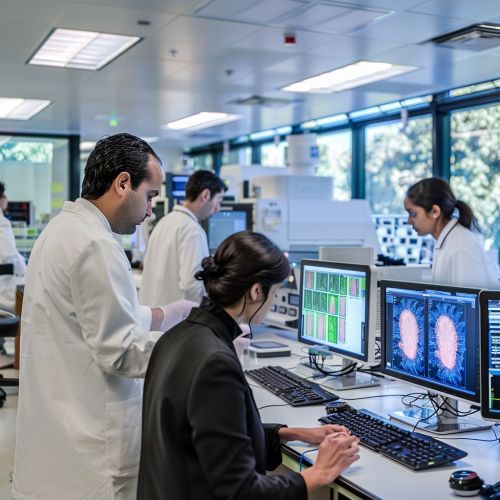Neuroinformatics
Introduction
Neuroinformatics is a research field that focuses on the organization of neuroscience data through computational models and analytical tools. It combines data across all levels and scales of neuroscience in order to understand the complex functions of the brain and nervous system. This interdisciplinary field integrates concepts from informatics, neuroscience, computer science, statistics, and physics to better understand the structure and function of the nervous system and the mechanisms that govern behavior.
History
The field of neuroinformatics emerged in the 1980s as a response to the explosion of data generated by advancements in imaging and molecular biology techniques. The term "neuroinformatics" was first used in a publication by the Swiss Federal Institute of Technology in 1989. Since then, the field has grown and evolved, with the establishment of the International Neuroinformatics Coordinating Facility (INCF) in 2005 marking a significant milestone.

Scope and Aims
The primary aim of neuroinformatics is to develop and apply advanced tools and approaches to the understanding of the brain and the nervous system. This includes the development of computational models, the creation of databases for neuroscientific data, and the application of algorithms for analyzing and interpreting this data. Neuroinformatics also aims to facilitate the integration and synthesis of neuroscience data at all levels of analysis, from molecular to behavioral.
Techniques and Tools
Neuroinformatics uses a variety of techniques and tools, including data mining, machine learning, and neural networks, to analyze and interpret complex neuroscience data. Other tools include databases for storing and managing data, software for data analysis, and computational models for simulating neural processes.
Applications
Neuroinformatics has a wide range of applications in neuroscience research and clinical practice. It is used in the study of brain disorders, such as Alzheimer's disease and Parkinson's disease, as well as in the development of new therapies for these conditions. Neuroinformatics is also used in brain mapping, the study of neural networks, and the development of brain-computer interfaces.
Future Directions
The future of neuroinformatics is likely to be shaped by advances in technology, particularly in the areas of data storage, data analysis, and computational modeling. The increasing availability of large-scale neuroscience data sets, combined with advances in machine learning and other computational techniques, is expected to drive significant progress in our understanding of the brain and the nervous system.
